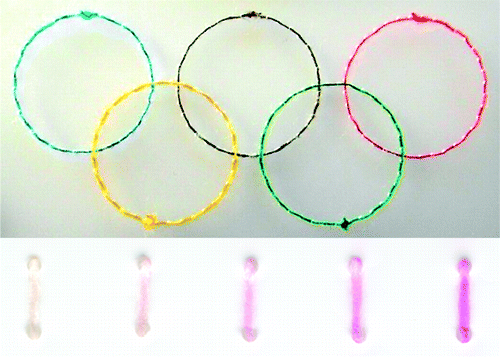
“Microfluidics” (Wikipedia) is kind of a blanket term that covers manipulation of liquids on a very small scale. An inkjet printer head is an everyday example of a microfluidic system, but many of the more exciting applications are in biochemistry and/or medical diagnostics, where mass-produced “lab-on-a-chip” systems incorporating complex networks of tiny fluid channels could one day bring complex analytical procedures, that once were practical only in the laboratory, out into the field. Many of the same technologies that are used in the production of semiconductors can be applied to the manufacture of microfluidic systems.
As in semiconductors, however, the costs of prototyping labs-on-chips can be quite high. Many of you may recall the buzz surrounding UC-Irvine professor Michelle Khine’s recent discovery that inkjet-printable shrinky-dink plastic could be used to rapidly prototype microfluidic systems.
Along the same lines, a reader recently pointed me to this paper in the ACS journal Applied Materials & Interfaces that proposes using capillary action along ordinary cotton thread as a cheap and easy way to prototype, and perhaps even manufacture, microfluidic devices. Although the scale of even fine thread is quite a bit larger than normal for microfluidic research, the accessibility of the technique is pretty intriguing. Among other things, Wei Shen and co-workers at Australia’s Monash University demonstrate that fluids flowing along two thread “channels” can be effectively mixed simply by twisting the threads together, and that, when stitched onto an impermeable substrate, two channels can cross each other, without mixing, by the simple expedient of passing one thread over the substrate and one thread under it at the intersection.
[Thanks, Alan!]
ADVERTISEMENT





